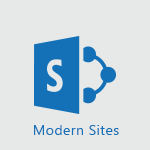SharePoint (Classic Sites) - Targeting content using a specific audience Video
In this video training on accessibility in your day-to-day life, you will learn about the design rules, best practices, and tools to improve the accessibility of your documents.
The video covers topics such as using accessible templates in Office 365, checking accessibility in Excel, Outlook, Word, and PowerPoint, and improving email accessibility.
By following these guidelines, you will be able to make your documents more readable for blind individuals, add accessible tables and lists, and make your Outlook signature accessible.
This training will help you improve the design of your documents in terms of accessibility and make your work environment more inclusive for all.
- 3:35
- 2919 views
-
SharePoint (Classic Sites) - Sharing a folder or document with someone outside the company
- 3:44
- Viewed 2903 times
-
SharePoint (Classic Sites) - Targeting content using a specific audience
- 3:35
- Viewed 2919 times
-
SharePoint (Classic Sites) - Checking the granted shares
- 2:27
- Viewed 2852 times
-
SharePoint (Classic Sites) - Restoring an earlier version of your document
- 1:50
- Viewed 3035 times
-
Teams - Restrict a document to reading only
- 1:03
- Viewed 3203 times
-
Teams - Create and manage team channel
- 1:51
- Viewed 3383 times
-
SharePoint (Classic Sites) - Creating a permission group
- 3:53
- Viewed 2725 times
-
SharePoint (Classic Sites) - Creating a personalized permission level
- 2:46
- Viewed 2905 times
-
Protect a document shared by password
- 1:41
- Viewed 9552 times
-
How do I prevent the transfer of an email?
- 2:07
- Viewed 8599 times
-
Recovering deleted items (Recycle bin and Second-stage recycle bin)
- 2:18
- Viewed 4848 times
-
How do I block a sender?
- 1:01
- Viewed 3783 times
-
How do I share a document securely with Outlook?
- 1:49
- Viewed 3527 times
-
Create and manage team channel
- 1:51
- Viewed 3383 times
-
Do I share with OneDrive, SharePoint, or TEAMS?
- 2:24
- Viewed 3328 times
-
Manage permissions
- 1:10
- Viewed 3240 times
-
Restrict a folder/document to certain members of your team
- 1:49
- Viewed 3219 times
-
Restrict a document to reading only
- 1:03
- Viewed 3203 times
-
Granting access to the SharePoint site to someone outside the company
- 3:46
- Viewed 3198 times
-
How do I recognize a fraudulent email?
- 2:01
- Viewed 3040 times
-
Restoring an earlier version of your document
- 1:50
- Viewed 3035 times
-
Creating a personalized permission level
- 2:46
- Viewed 2905 times
-
Sharing a folder or document with someone outside the company
- 3:44
- Viewed 2903 times
-
Understanding the different types and roles of team sites in SharePoint
- 3:05
- Viewed 2859 times
-
Checking the granted shares
- 2:27
- Viewed 2852 times
-
Restricting a document to read-only mode (Extract a document)
- 2:05
- Viewed 2821 times
-
How to protect an email by encryption?
- 2:41
- Viewed 2771 times
-
Creating a permission group
- 3:53
- Viewed 2725 times
-
Ensure data security during a Teams meeting
- 1:48
- Viewed 2639 times
-
General security practices in Outlook
- 1:03
- Viewed 2589 times
-
Manage permissions
- 1:03
- Viewed 1634 times
-
Understand and Secure Information Sharing in Instant Messaging
- 2:38
- Viewed 1037 times
-
Manage Privacy in Private Channels
- 2:34
- Viewed 827 times
-
Restrict a Document to Certain Team Members
- 1:50
- Viewed 821 times
-
Secure Teams Upon Creation
- 2:57
- Viewed 801 times
-
Secure a Shared Document with a Password
- 1:28
- Viewed 790 times
-
Restrict a Document to Read-Only
- 0:58
- Viewed 785 times
-
Check Granted Shares
- 00:48
- Viewed 430 times
-
Protect My Document with a Password and Expiration Date
- 01:02
- Viewed 374 times
-
Modify Sharing Rules
- 00:53
- Viewed 372 times
-
Recover deleted items
- 01:09
- Viewed 361 times
-
Best Security Practices on OneDrive
- 01:27
- Viewed 356 times
-
Restore Your OneDrive Space
- 01:42
- Viewed 346 times
-
Avoid Abusive Document Sharing
- 00:57
- Viewed 332 times
-
Block a sender
- 01:54
- Viewed 280 times
-
Recall or replace an e-mail message
- 01:45
- Viewed 243 times
-
Prevent transfer for a meeting
- 01:19
- Viewed 213 times
-
Prevent the forwarding of an email
- 01:01
- Viewed 212 times
-
Share a document securely with Outlook
- 02:21
- Viewed 207 times
-
Identify a fraudulent email
- 02:06
- Viewed 206 times
-
Protect an email by encrypting
- 01:10
- Viewed 205 times
-
Guide to Using the Microsoft Authenticator App
- 01:47
- Viewed 186 times
-
Provide an overview of best security practices in Outlook
- 01:08
- Viewed 178 times
-
Concept of Multi-Factor Authentication
- 01:51
- Viewed 173 times
-
Turn on Multi-Factor Authentication in the Admin Section
- 02:07
- Viewed 146 times
-
Introduction to PowerBI
- 00:60
- Viewed 167 times
-
Introduction to Microsoft Outlook
- 01:09
- Viewed 158 times
-
Introduction to Microsoft Insights
- 02:04
- Viewed 155 times
-
Introduction to Microsoft Viva
- 01:22
- Viewed 161 times
-
Introduction to Planner
- 00:56
- Viewed 169 times
-
Introduction to Microsoft Visio
- 02:07
- Viewed 158 times
-
Introduction to Microsoft Forms
- 00:52
- Viewed 164 times
-
Introducing to Microsoft Designer
- 00:28
- Viewed 224 times
-
Introduction to Sway
- 01:53
- Viewed 142 times
-
Introducing to Word
- 01:00
- Viewed 165 times
-
Introducing to SharePoint Premium
- 00:47
- Viewed 147 times
-
Create a call group
- 01:15
- Viewed 200 times
-
Use call delegation
- 01:07
- Viewed 128 times
-
Assign a delegate for your calls
- 01:08
- Viewed 200 times
-
Ring multiple devices simultaneously
- 01:36
- Viewed 136 times
-
Use the "Do Not Disturb" function for calls
- 01:28
- Viewed 126 times
-
Manage advanced call notifications
- 01:29
- Viewed 141 times
-
Configure audio settings for better sound quality
- 02:08
- Viewed 173 times
-
Block unwanted calls
- 01:24
- Viewed 140 times
-
Disable all call forwarding
- 01:09
- Viewed 141 times
-
Manage a call group in Teams
- 02:01
- Viewed 132 times
-
Update voicemail forwarding settings
- 01:21
- Viewed 130 times
-
Configure call forwarding to internal numbers
- 01:02
- Viewed 123 times
-
Set call forwarding to external numbers
- 01:03
- Viewed 148 times
-
Manage voicemail messages
- 01:55
- Viewed 187 times
-
Access voicemail via mobile and PC
- 02:03
- Viewed 205 times
-
Customize your voicemail greeting
- 02:17
- Viewed 125 times
-
Transfer calls with or without an announcement
- 01:38
- Viewed 121 times
-
Manage simultaneous calls
- 01:52
- Viewed 131 times
-
Support third-party apps during calls
- 01:53
- Viewed 160 times
-
Add participants quickly and securely
- 01:37
- Viewed 132 times
-
Configure call privacy and security settings
- 02:51
- Viewed 130 times
-
Manage calls on hold
- 01:20
- Viewed 137 times
-
Live transcription and generate summaries via AI
- 03:43
- Viewed 126 times
-
Use the interface to make and receive calls
- 01:21
- Viewed 131 times
-
Action Function
- 04:18
- Viewed 138 times
-
Search Function
- 03:42
- Viewed 188 times
-
Date and Time Function
- 02:53
- Viewed 169 times
-
Logical Function
- 03:14
- Viewed 255 times
-
Text Function
- 03:25
- Viewed 200 times
-
Basic Function
- 02:35
- Viewed 158 times
-
Categories of Functions in Power FX
- 01:51
- Viewed 188 times
-
Introduction to Power Fx
- 01:09
- Viewed 159 times
-
The New Calendar
- 03:14
- Viewed 282 times
-
Sections
- 02:34
- Viewed 171 times
-
Customizing Views
- 03:25
- Viewed 166 times
-
Introduction to the New Features of Microsoft Teams
- 00:47
- Viewed 271 times
-
Guide to Using the Microsoft Authenticator App
- 01:47
- Viewed 186 times
-
Turn on Multi-Factor Authentication in the Admin Section
- 02:07
- Viewed 146 times
-
Concept of Multi-Factor Authentication
- 01:51
- Viewed 173 times
-
Retrieve Data from a Web Page and Include it in Excel
- 04:35
- Viewed 392 times
-
Create a Desktop Flow with Power Automate from a Template
- 03:12
- Viewed 334 times
-
Understand the Specifics and Requirements of Desktop Flows
- 02:44
- Viewed 206 times
-
Dropbox: Create a SAS Exchange Between SharePoint and Another Storage Service
- 03:34
- Viewed 349 times
-
Excel: List Files from a Channel in an Excel Workbook with Power Automate
- 04:51
- Viewed 222 times
-
Excel: Link Excel Scripts and Power Automate Flows
- 03:22
- Viewed 228 times
-
SharePoint: Link Microsoft Forms and Lists in a Power Automate Flow
- 04:43
- Viewed 404 times
-
SharePoint: Automate File Movement to an Archive Library
- 05:20
- Viewed 199 times
-
Share Power Automate Flows
- 02:20
- Viewed 193 times
-
Manipulate Dynamic Content with Power FX
- 03:59
- Viewed 197 times
-
Leverage Variables with Power FX in Power Automate
- 03:28
- Viewed 184 times
-
Understand the Concept of Variables and Loops in Power Automate
- 03:55
- Viewed 196 times
-
Add Conditional “Switch” Actions in Power Automate
- 03:58
- Viewed 232 times
-
Add Conditional “IF” Actions in Power Automate
- 03:06
- Viewed 168 times
-
Create an Approval Flow with Power Automate
- 03:10
- Viewed 361 times
-
Create a Scheduled Flow with Power Automate
- 01:29
- Viewed 584 times
-
Create an Instant Flow with Power Automate
- 02:18
- Viewed 338 times
-
Create an Automated Flow with Power Automate
- 03:28
- Viewed 328 times
-
Create a Simple Flow with AI Copilot
- 04:31
- Viewed 306 times
-
Create a Flow Based on a Template with Power Automate
- 03:20
- Viewed 274 times
-
Discover the “Build Space”
- 02:26
- Viewed 192 times
-
The Power Automate Mobile App
- 01:39
- Viewed 200 times
-
Familiarize Yourself with the Different Types of Flows
- 01:37
- Viewed 193 times
-
Understand the Steps to Create a Power Automate Flow
- 01:51
- Viewed 282 times
-
Discover the Power Automate Home Interface
- 02:51
- Viewed 187 times
-
Access Power Automate for the Web
- 01:25
- Viewed 298 times
-
Understand the Benefits of Power Automate
- 01:30
- Viewed 245 times
Objectifs :
This video aims to guide users on how to enable audience targeting in SharePoint document libraries, allowing specific content to be visible only to designated groups or audiences.
Chapitres :
-
Introduction to Audience Targeting
Audience targeting in SharePoint allows for the customization of content visibility based on user groups. This feature is particularly useful for organizations that need to restrict access to sensitive documents or information to specific departments or teams. -
Identifying Audiences
Audiences can be identified through various means, including: - SharePoint groups - Distribution lists - Security groups - A rule system to create a global audience For instance, you can configure a document library so that only members of the legal department can view certain documents. -
Step 1: Enabling Audience Targeting
To enable audience targeting for a document library, follow these steps: 1. Open the relevant document library. 2. Click on 'Settings' located at the top right corner. 3. Select 'Library Settings'. 4. Under the 'General Settings' column, find 'Audience targeting settings'. 5. Check the box to enable audience targeting (this box is unchecked by default). 6. Click 'OK' to validate your changes. -
Step 2: Defining Audience for Individual Items
Once audience targeting is enabled, you can specify which audience can view individual items in the library. Here’s how: 1. Navigate back to the contents of your library. 2. Identify the document you want to restrict access to. 3. Click on the three dots next to the document and select 'Properties' via the 'More' button. 4. In the document properties, click on 'Edit Item'. 5. In the 'Targeted Audience' section, click 'Modify'. 6. Choose an audience from your global audiences, security distribution groups, or SharePoint groups. -
Example: Restricting Access to Suppliers
For example, if you want a document to be visible only to your suppliers, you would: - Select the SharePoint group created for suppliers. - Search for the group and select it. - Confirm the selection and click 'Save'. This ensures that only members of the 'providers' permission group can access the document. -
Conclusion
By following these steps, you can effectively manage document visibility in SharePoint, ensuring that sensitive information is only accessible to the appropriate audiences. This enhances security and streamlines access to necessary documents for specific teams.
FAQ :
What is audience targeting in SharePoint?
Audience targeting in SharePoint is a feature that allows you to restrict the visibility of content in lists or libraries to specific groups of users, ensuring that only the intended audience can access certain documents.
How do I enable audience targeting for a SharePoint library?
To enable audience targeting for a SharePoint library, go to the library settings, find the 'Audience targeting settings' under general settings, check the 'Enable audience targeting' box, and click OK.
Can I target documents to specific SharePoint groups?
Yes, you can target documents to specific SharePoint groups by modifying the document properties and selecting the desired audience from your global audiences or SharePoint groups.
What types of groups can be used for audience targeting?
You can use SharePoint groups, security groups, or distribution lists for audience targeting in SharePoint.
What happens if I do not enable audience targeting?
If audience targeting is not enabled, all users with access to the library will be able to see all documents, regardless of any specific audience settings you may want to apply.
Quelques cas d'usages :
Restricting Access to Sensitive Documents
In a legal department, audience targeting can be used to ensure that only members of the legal team can access sensitive legal documents, preventing unauthorized access from other departments.
Managing Supplier Documentation
A company can use audience targeting to share specific documents with suppliers by creating a SharePoint group for suppliers, ensuring that only they can view or edit the relevant documents.
Internal Communication for Project Teams
Project teams can utilize audience targeting to share project-related documents only with team members, enhancing collaboration while keeping information secure from other employees.
Training Material Distribution
An organization can target training materials to specific employee groups, ensuring that only those who need the training can access the materials, thus improving training efficiency.
Compliance Document Management
Companies can apply audience targeting to compliance documents, making them accessible only to compliance officers, thereby ensuring that sensitive compliance information is not exposed to unauthorized personnel.
Glossaire :
Audience Targeting
A feature that allows content in a SharePoint library or list to be displayed only to specific groups of users, enhancing content visibility management.
SharePoint Groups
Collections of users in SharePoint that can be assigned permissions to access specific content or features within a SharePoint site.
Distribution Lists
Email lists that allow messages to be sent to multiple recipients at once, often used for communication within organizations.
Security Groups
Groups that are used to manage user permissions and access rights to resources in a network or system.
Global Audience
A set of users defined by specific criteria that can be targeted for content visibility in SharePoint.
Library Settings
Configuration options available for a document library in SharePoint, allowing users to manage permissions, audience targeting, and other features.
Permission Group
A group of users that have been assigned specific permissions to access or modify content within a SharePoint site.
Edit Item
A function that allows users to modify the properties and settings of a specific item or document within a SharePoint library.




